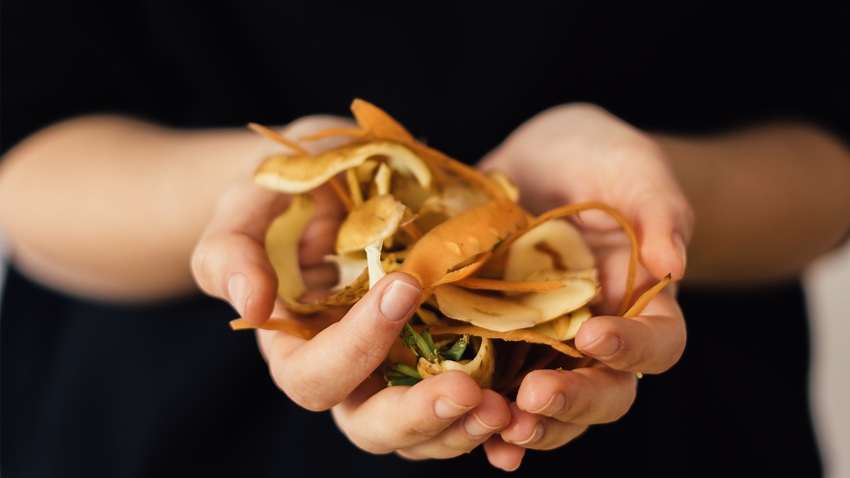Experts explain why upcycling is “sitting on nutritional gold”
Former food scientists for major food companies Lara Ramdin and Jason Liebert promote upcycling for environmental impact and improved health. They believe upcycling needs to be embraced by companies and consumers alike, touting the third-party certification created by Upcycled Food Association (UFA) as a driving force behind the disruption of food waste.

At a Glance
- Upcycling food waste is a growing movement with the potential to significantly reduce food waste and create value.
- Collaboration and engagement in industry are key to successful upcycling.
- Ramdin and Liebert aim to expand the Upcycled Certified certification, encouraging big food companies to join the movement.
Lara Ramdin, Ph.D., and Jason Liebert met when they were in dramatically different industries. Ramdin was a scientist for Dole, focusing on Filipino banana plantations, while Liebert was working with Canadian potato farmers. As they explained in the panel discussion, "The Future of Food is Upcycled" at SupplySide West/Food ingredients North America (FiNA) 2023, both saw that their industry’s waste products were more than just trash.
“There’s resistant starch in green bananas,” Ramdin said. “And there’s resistant starch in potatoes. We became friends on the basis that we both felt that we were sitting on nutritional gold, essentially, in terms of supporting people’s health and creating better health and wellness from food waste.”
The United States is estimated to waste more than $120 billion of food each year, and the show floor at SupplySide West featured numerous brands trying to combat this well-established problem by embracing upcycling. According to the UFA, which created the first third-party upcycled certification (Upcycled Certified), the term refers to “ingredients that otherwise would not have gone to human consumption, are procured and produced using verifiable supply chains, and have a positive impact on the environment.”
In the case of resistant starch from bananas or potatoes, it can nutritionally enrich both animal feed and human food products, decreasing animals’ methane emissions and improving people’s gut microbiome health.
The decision to embrace upcycling, however, has less to do with nutrition, and more to do with someone seeing the obvious opportunity right in front of them. “People just go, ‘We’re going to do something about it because it’s a no-brainer,’” Ramdin said.
Changing industries from within
Today, Ramdin is chief innovation and science officer for the B2B upcycling company Upcycled Foods Inc., and also sits on the board of UFA. Liebert is the chief growth officer at Solnul, a prebiotic fiber producer utilizing potato crop leftovers.
Both are adamant that the work they do is only the start of what makes upcycling work. It also needs to be driven by the companies producing the waste, not just the companies creating upcycled products.
“I’ve sat at a lot of farmer kitchen tables, talking to them about what’s important for this process, why it’s good and why they should maybe tweak things a little in order to get materials off the field in a way that makes sense,” Liebert explained. “It’s critical to have those owners of that material fully engaged in the process. We say a lot that this process doesn’t start when that material hits our manufacturing facility. It starts in the field, during harvest and sometimes even before harvest.”
Rethinking supply chains
It’s common to think of a supply chain as a problem that needs to be minimized or overcome. Upcycling challenges producers, however, to find value where there is now only cost, Ramdin said.
“Upcycled Foods Inc. works with manufacturers who have a waste problem and/or issue that they don’t know how to deal with,” she explained. “So, when I think about supply chains, I think partners who want to make their supply chains more valuable.”
This added value can come in the form of:
Reduced water usage
Reduced energy usage
Creating additional products
Enhancing nutrition in existing products
Liebert said that he’s seen this logic speak to the pragmatic mindset of agricultural producers. “They are very innovative,” he detailed. “They want to add value to their acres and to their fields. They absolutely do.”
The next step for upcycling
Currently, UFA includes 263 members, the majority (258) of which Ramdin said are small-to-medium startups. The association also incorporates a couple of familiar multinational brands, including Dole, Del Monte Foods Inc. and International Flavors & Fragrances. Bringing more big brands and looking for unrecognized “nutritional goldmines” is the next step to make the Upcycled Certified certification “as big as the organic certification,” she said.
“If we want the upcycled movement to gain traction and also certification to gain traction, then these businesses need different types of relationships, partnerships and funding,” Ramdin explained. “And we need more bigger companies to join forces with smaller companies to really create the revolution and create momentum around the disruption.”
About the Author(s)
You May Also Like






